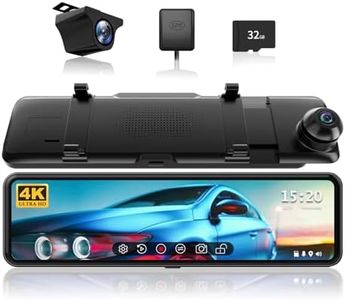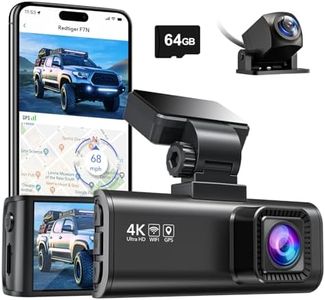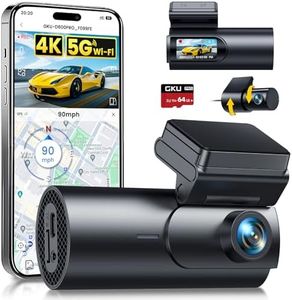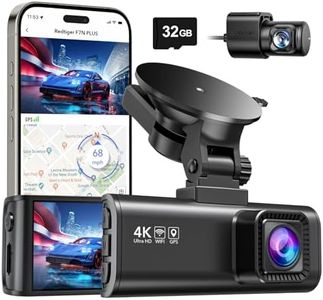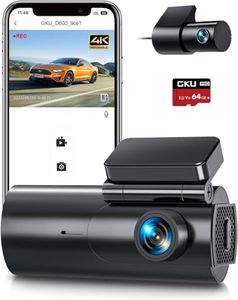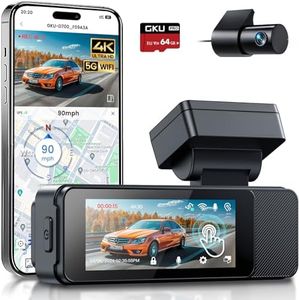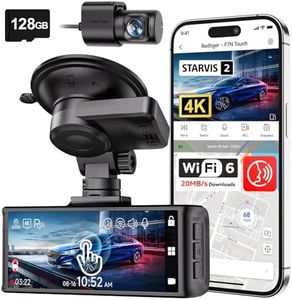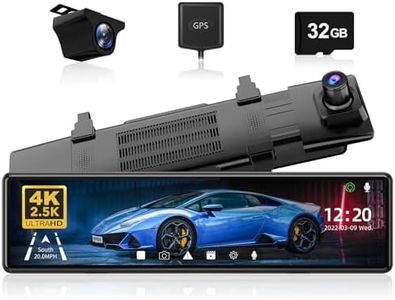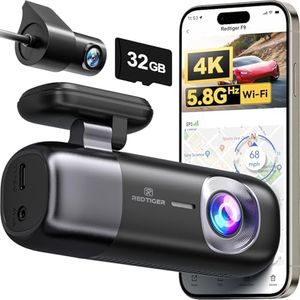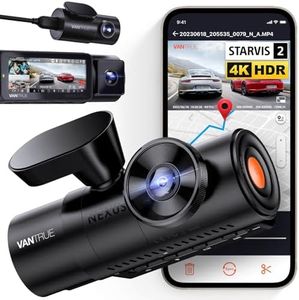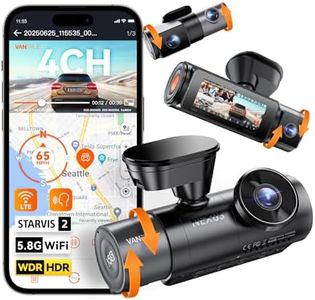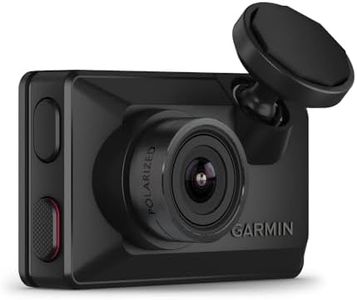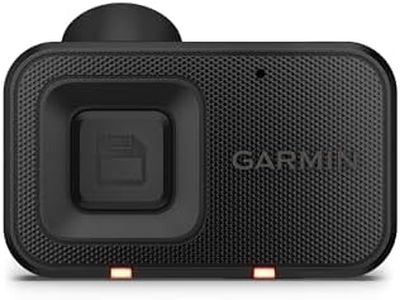We Use CookiesWe use cookies to enhance the security, performance,
functionality and for analytical and promotional activities. By continuing to browse this site you
are agreeing to our privacy policy
10 Best Dash Cameras
From leading brands and best sellers available on the web.Buying Guide for the Best Dash Cameras
Choosing the right dash camera can make a big difference for your safety and peace of mind while driving. Dash cams are used to record what happens on the road, and sometimes inside your car as well. The right features can help you capture important details in case of an accident or help you monitor your parked vehicle. It's smart to think about how and where you'll use your dash cam when comparing features, so you end up with one that fits your driving habits and gives you the information you need the most.Video ResolutionVideo resolution refers to how clear and detailed your recordings will be. Higher resolution means sharper images and easier identification of important details like license plates and faces. Most dash cams offer resolutions like 720p (HD), 1080p (Full HD), and 1440p or 4K (Ultra HD). Lower resolutions (720p) might be enough for basic recording but can be blurry. 1080p is a good balance for most users, offering clear images without using too much storage. If you want the sharpest footage for day and night or to capture fine details for insurance, consider higher resolutions like 1440p or 4K—just keep in mind they use more memory and may need bigger or faster memory cards. Think about how important video clarity is to you when choosing.
Field of View (FOV)Field of view is how much of the road the camera can see at once, measured in degrees. A wider field of view (150-180°) will record more of the surroundings, capturing lanes on either side and more of the scene, while a narrower field (120-140°) focuses more directly ahead. A wide FOV is great for city driving or busy roads where lots happens, but too wide can sometimes make things look smaller and details harder to spot. If you mainly want to record what happens right in front, a narrower field can work. Decide based on where you drive most and what you want to capture.
Night VisionNight vision is a feature that helps a dash cam record clearly in low light or at night. This often relies on special sensors or infrared technology. Good night vision means your camera will still produce useful video in dark conditions, such as parking lots or unlit roads. Some cameras perform much better at night than others, so check for features like 'enhanced night mode' or 'wide dynamic range.' If you drive often after dark or want reliable 24/7 coverage, strong night vision is important. Look for sample videos before picking if night quality matters to you.
Recording Modes (Loop Recording & Parking Mode)Dash cams often use loop recording, which means when the memory card fills up, the camera automatically overwrites old footage with new recordings. This keeps the camera running without manual intervention. Some models also have parking mode, allowing the camera to record automatically when it senses movement or an impact while the car is parked. Loop recording is standard and important for hassle-free use, while parking mode is great for extra security if you leave your car outside or in public areas. Choose based on whether you want your car protected when unattended.
G-SensorA G-sensor is a built-in sensor that detects sudden movements or impacts, like during a collision. When triggered, it locks and protects that video segment from being overwritten by the loop recording. This is key for making sure you always have recordings of important events. If you want a dash cam for accident protection and insurance purposes, make sure it has a reliable G-sensor so crucial evidence is always saved.
Mounting and SizeMounting and size affect how visible or discreet your dash cam will be in your car, as well as how easy it is to install or move. Some are small and almost hidden behind the mirror, while others are larger and may be more noticeable. Suction cup mounts are usually easy to move between vehicles, while adhesive mounts are more permanent but lower profile. If you want your camera to be subtle and out of sight, go for a smaller model with discreet mounting. If you'll move it often between cars, look for an easy-to-remove mount.
Connectivity & App SupportSome dash cams offer connectivity like Wi-Fi or Bluetooth, letting you connect your smartphone for easier viewing, downloading, or sharing video clips. Others might require you to remove the memory card and use a computer. Phones apps can make using your dash cam much simpler, especially for quickly checking or sending videos after an incident. If you want quick access to your recordings or like technology, a camera with app support is a smart pick.
Audio RecordingAudio recording means the dash cam also picks up sound from inside the vehicle. This can capture conversations, traffic noises, or even proof of what was said during incidents. Some people prefer to have this off for privacy, while others like the extra context. Decide whether having audio is important to you, and if so, make sure the dash cam can record and let you mute or enable it as needed.
